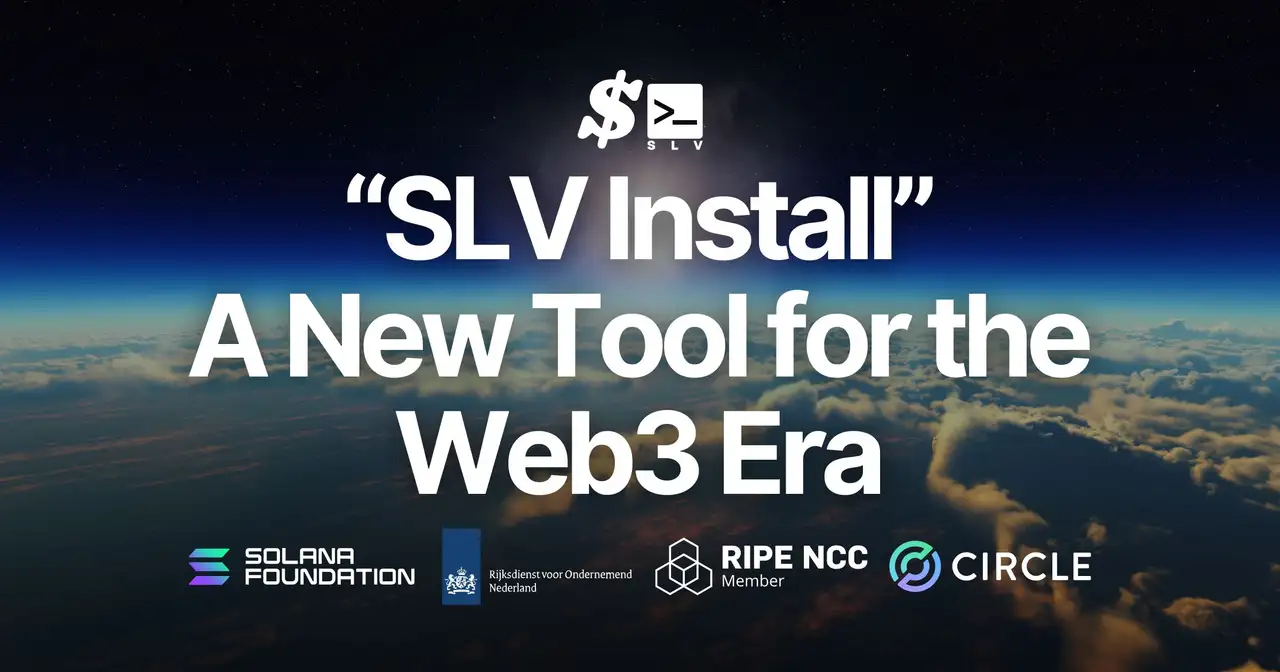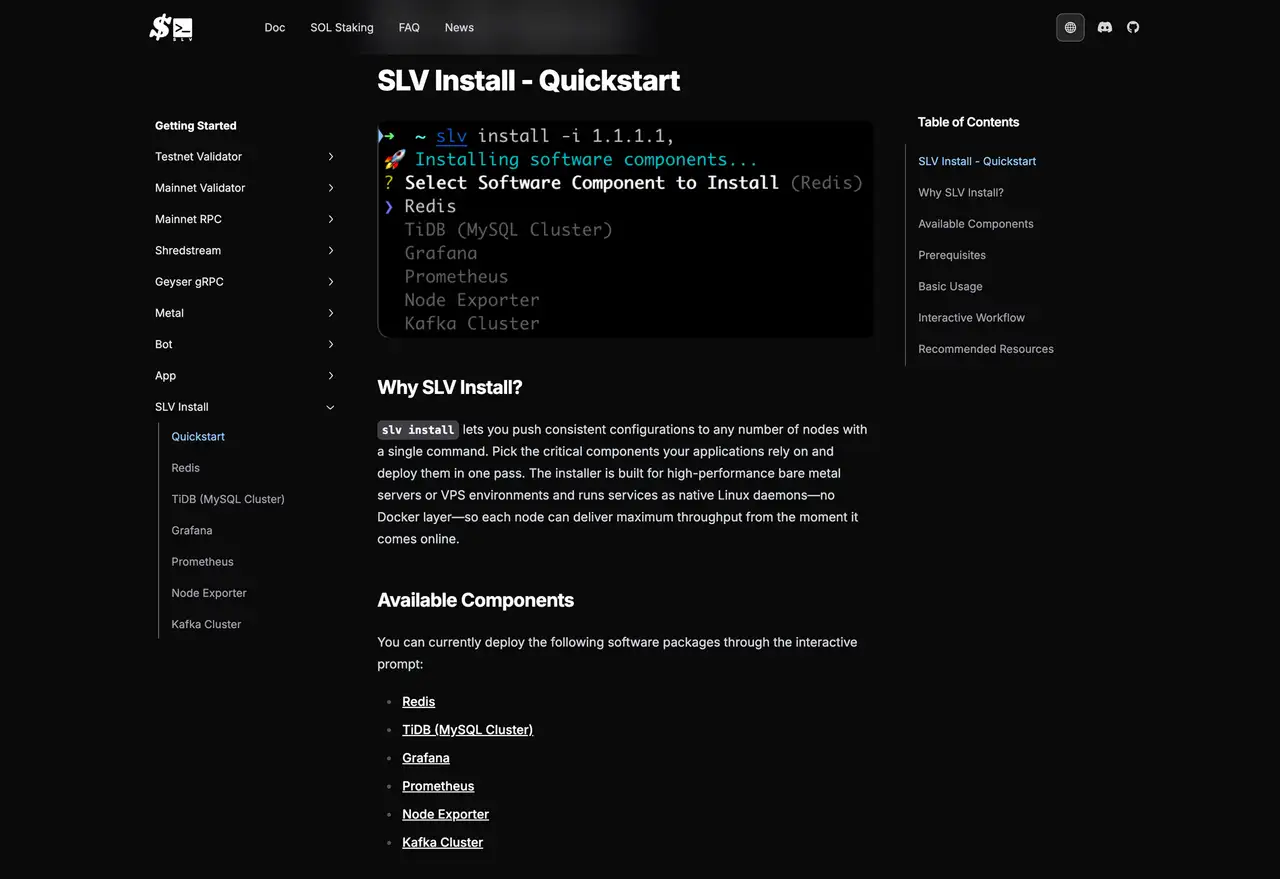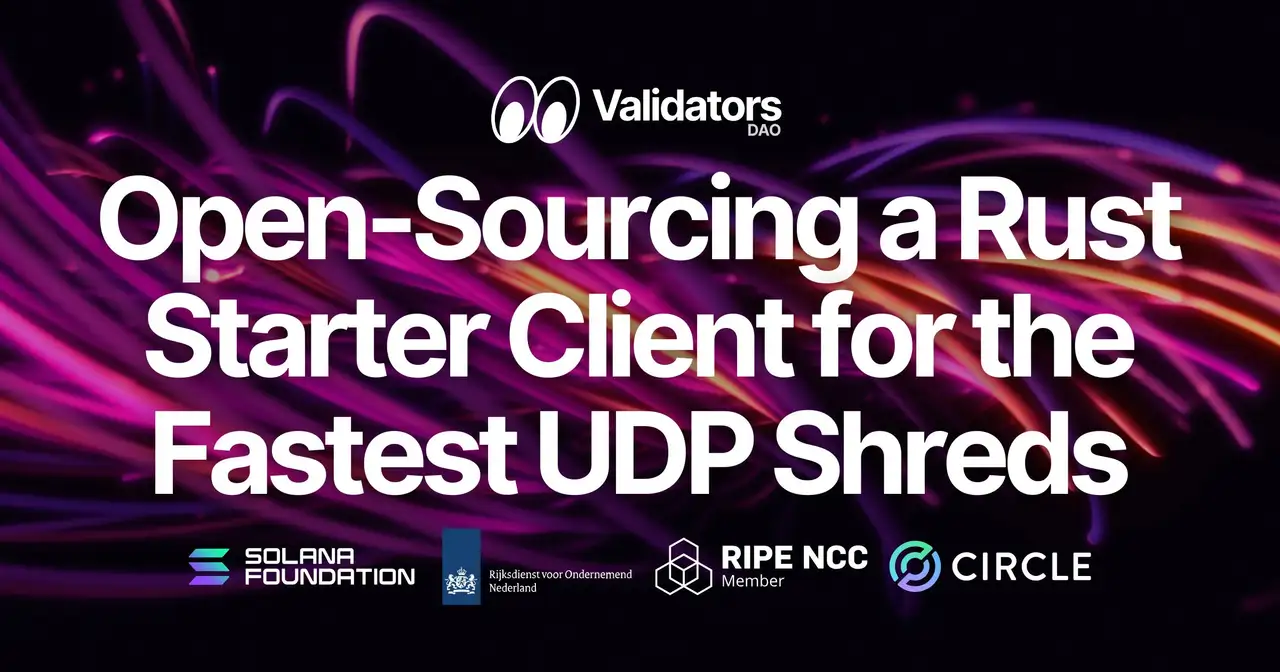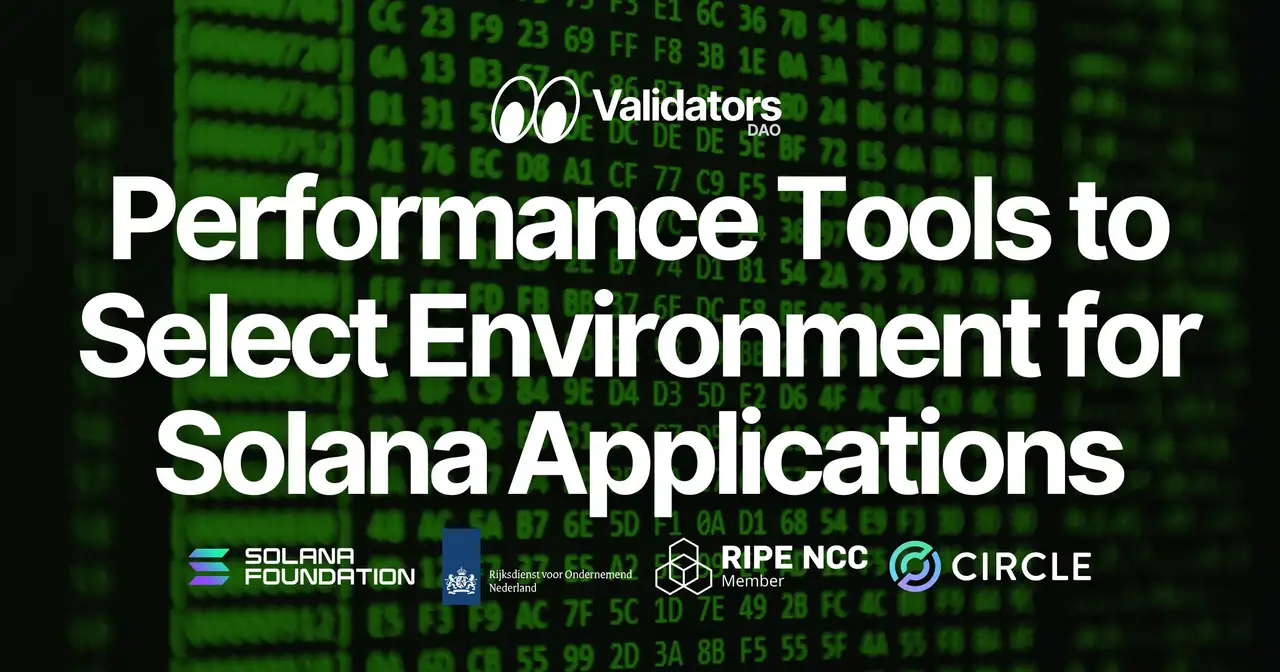SLV Releases “SLV Install” — A New Tool for the Web3 Era That Makes High-Performance Infrastructure Easy and Reproducible
SLV Releases “SLV Install” — A New Tool for the Web3 Era That Makes High-Performance Infrastructure Easy and Reproducible

ELSOUL LABO B.V. (Headquarters: Amsterdam, the Netherlands, CEO: Fumitake Kawasaki) and Validators DAO have released version v0.9.800 of the open-source automation software “SLV,” introducing a major new feature: SLV Install.
With this release, developers can now set up Redis, TiDB, Grafana, Prometheus, Kafka, and other key components required for high-performance Web3 and financial-grade applications — all with a single command.
Complex environment setup and dependency management are no longer necessary, enabling anyone to reproduce a scalable backend infrastructure in minutes.
Complex environment setup and dependency management are no longer necessary, enabling anyone to reproduce a scalable backend infrastructure in minutes.
Background: The Limits of Cloud and the Shift in Web3 Infrastructure
Cloud computing has been designed primarily for global availability, resilience, and scalability.
Its architecture is based on containerization technologies such as Docker, where numerous small CPU cores are distributed across nodes to ensure stable operations.
This model is highly effective for general-purpose applications, prioritizing fault tolerance and elasticity.
Its architecture is based on containerization technologies such as Docker, where numerous small CPU cores are distributed across nodes to ensure stable operations.
This model is highly effective for general-purpose applications, prioritizing fault tolerance and elasticity.
However, Web3 infrastructure — especially Solana — requires a completely different approach.
It demands single high-performance nodes optimized for CPU cache, memory access, and ultra-low network latency.
These characteristics cannot be fully achieved within the abstracted layers of conventional cloud environments.
The issue is not that “the cloud is bad,” but that its design philosophy simply pursues different goals.
It demands single high-performance nodes optimized for CPU cache, memory access, and ultra-low network latency.
These characteristics cannot be fully achieved within the abstracted layers of conventional cloud environments.
The issue is not that “the cloud is bad,” but that its design philosophy simply pursues different goals.
As a result, high-performance VPS and bare-metal servers have become the preferred choice for Solana validators and RPC providers, offering far better cost-performance and raw speed.
Yet, these environments lack the convenience and automation support of the cloud, making reproducible setups accessible only to a handful of experienced engineers.
Yet, these environments lack the convenience and automation support of the cloud, making reproducible setups accessible only to a handful of experienced engineers.
Without accessible high-performance infrastructure, powerful decentralized applications remain difficult to deploy — and overall blockchain user experience cannot evolve.
SLV Install was created to address this gap.
SLV Install was created to address this gap.
Overview of SLV Install

“SLV Install” is a new command-line tool that automatically deploys a full backend stack optimized for Solana.
It works seamlessly across bare-metal, VPS, and cloud environments, ensuring consistent setup regardless of platform differences.
It works seamlessly across bare-metal, VPS, and cloud environments, ensuring consistent setup regardless of platform differences.
By simply following interactive prompts, SLV Install handles configurations and dependencies automatically, preparing an operational environment within minutes.
Main components include:
- Redis: An in-memory data store used for caching and transaction processing, improving real-time performance.
- TiDB (MySQL Cluster): A distributed MySQL-compatible database offering scalability and high availability for large-scale data workloads.
- Grafana: A flexible visualization tool for monitoring and analytics through intuitive dashboards.
- Prometheus / Node Exporter: Collects and aggregates system metrics for real-time monitoring of resource usage.
- Kafka Cluster: A distributed messaging system for high-throughput, asynchronous, and scalable task processing.
All components are automatically configured to work together, enabling a reproducible and production-ready environment with a single command.
Purpose: Making High-Performance Infrastructure Accessible to Everyone
SLV Install bridges the long-standing gap between the convenience of cloud computing and the raw performance of bare-metal infrastructure.
It allows developers to build financial-grade architectures with the same ease of use that cloud tools offer — bringing high-speed, stable, and scalable environments within reach of all Web3 builders.
It allows developers to build financial-grade architectures with the same ease of use that cloud tools offer — bringing high-speed, stable, and scalable environments within reach of all Web3 builders.
By democratizing access to high-performance infrastructure, SLV aims to accelerate innovation and improve the overall user experience of blockchain applications.
Future Outlook
Going forward, SLV will continue to streamline the full lifecycle of Solana infrastructure — from validator and RPC setup to dApp connection, development, and operations.
Integration with Solana v3, Jito, and Firedancer clients is also planned, ensuring compatibility across upcoming validator architectures.
Integration with Solana v3, Jito, and Firedancer clients is also planned, ensuring compatibility across upcoming validator architectures.
In addition, a GUI-based SLV interface, Discord alerts, and advanced log management features are under development, further enhancing operational visibility and developer experience.
Related Links
- SLV Release Notes v0.9.800: https://github.com/ValidatorsDAO/slv/releases/tag/v0.9.800
- SLV Install Quickstart: https://slv.dev/en/doc/slv-install/quickstart/
- SLV Official Website: https://slv.dev
- Validators DAO Discord: https://discord.gg/C7ZQSrCkYR




